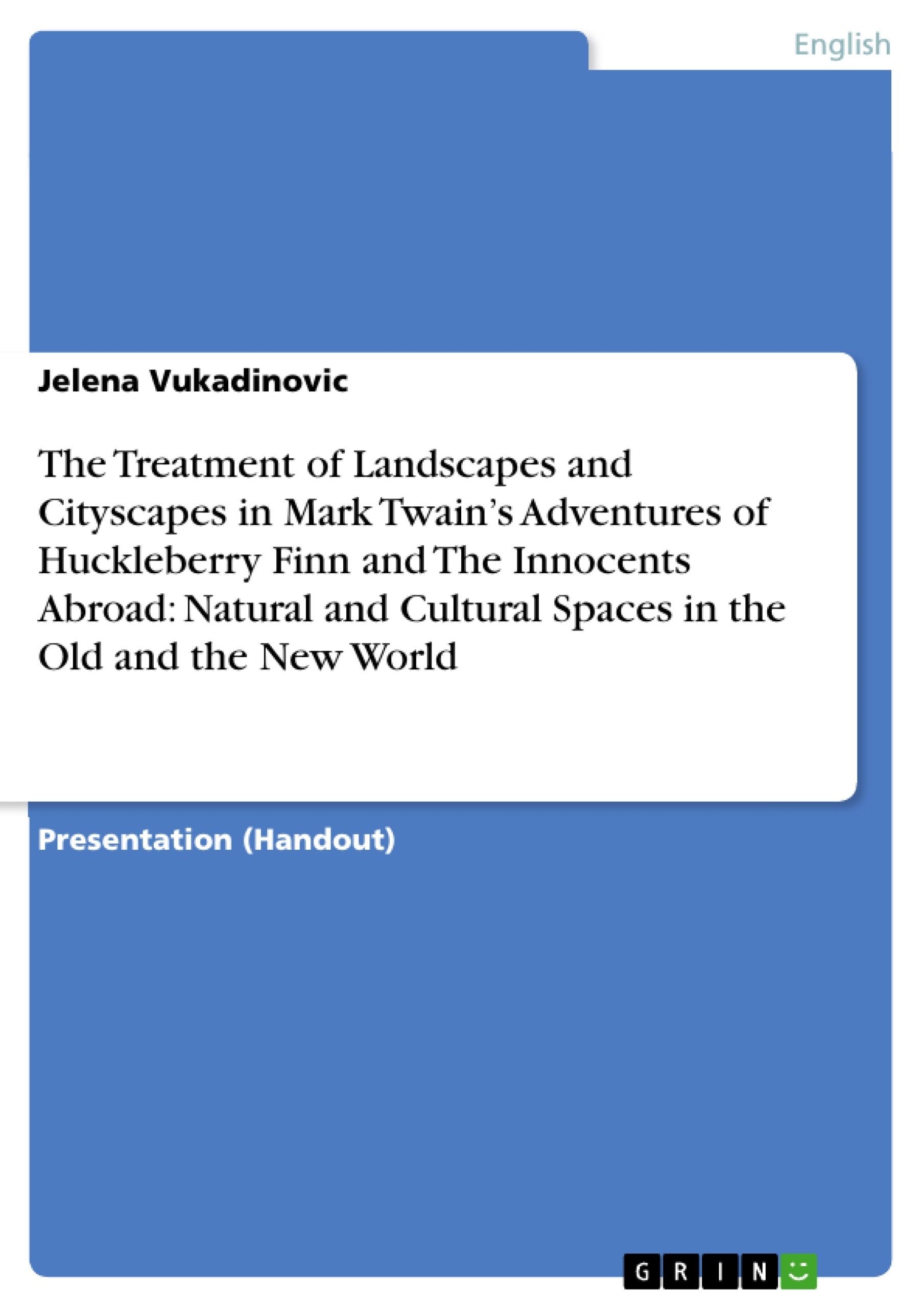As we all know Twain was very familiar with this landscape since he grew up there. In his 3 major
Mississippi novels he tries to give the reader an impression of his Mississippi landscape
There are various approaches to describe the experience of observing the river and its banks in the
dawn, but the one in Huck Finn, which is so to say the third approach seems to be the most successful
If one compares some phrases from all three novels describing the same event and the same [...]
Inhaltsverzeichnis (Table of Contents)
- Huckleberry Finn and the Mississippi Landscape
- Landscapes and Cityscapes in The Innocents Abroad
- De-romanticizing the places in the Old World
- Landscapes and cityscapes revealing social / political situation and the national character
- Comparison to the New World
Zielsetzung und Themenschwerpunkte (Objectives and Key Themes)
This paper examines Mark Twain's treatment of landscapes and cityscapes in his works, focusing on his use of language and imagery to convey both natural and cultural spaces. The study explores how Twain's own experiences and perspectives influenced his depictions of the Mississippi River, Europe, and the Holy Land.
- Twain's use of landscape descriptions to evoke a sense of place and time.
- Twain's deconstruction of romanticized views of the Old World.
- The relationship between landscape, social context, and national identity.
- The influence of Twain's American perspective on his observations of foreign cultures.
- Twain's use of humor and satire to critique social and political issues.
Zusammenfassung der Kapitel (Chapter Summaries)
The first section analyzes Twain's descriptions of the Mississippi River in Adventures of Huckleberry Finn, highlighting his unique approach to landscape portrayal. Twain utilizes everyday language and imagery, acknowledging both the beauty and potential dangers of the river. His descriptions are dynamic, capturing the river in constant flux and evoking the experience of a boy observing his surroundings.
The second section examines Twain's treatment of landscapes and cityscapes in The Innocents Abroad. It investigates how Twain deconstructs romanticized views of the Old World, often juxtaposing the grandeur of historical sites with the realities of poverty and social inequality. This section explores Twain's use of comparisons between the Old and New Worlds, revealing his American perspective on European cultures.
The chapter concludes with a discussion of how Twain's descriptions of landscapes and cityscapes serve to reveal social and political situations. He exposes the stark contrasts between the opulence of churches and cathedrals and the poverty of the common people. The analysis focuses on Twain's critical examination of social and political structures through his descriptions of landscapes and cityscapes.
Schlüsselwörter (Keywords)
The main keywords and focus topics of this paper include Mark Twain, Adventures of Huckleberry Finn, The Innocents Abroad, landscape descriptions, cityscapes, Mississippi River, Europe, Holy Land, travel writing, social commentary, satire, cultural critique, American perspective, national identity, and the juxtaposition of beauty and ugliness.
- Quote paper
- Jelena Vukadinovic (Author), 2003, The Treatment of Landscapes and Cityscapes in Mark Twain’s Adventures of Huckleberry Finn and The Innocents Abroad: Natural and Cultural Spaces in the Old and the New World, Munich, GRIN Verlag, https://www.grin.com/document/126100




